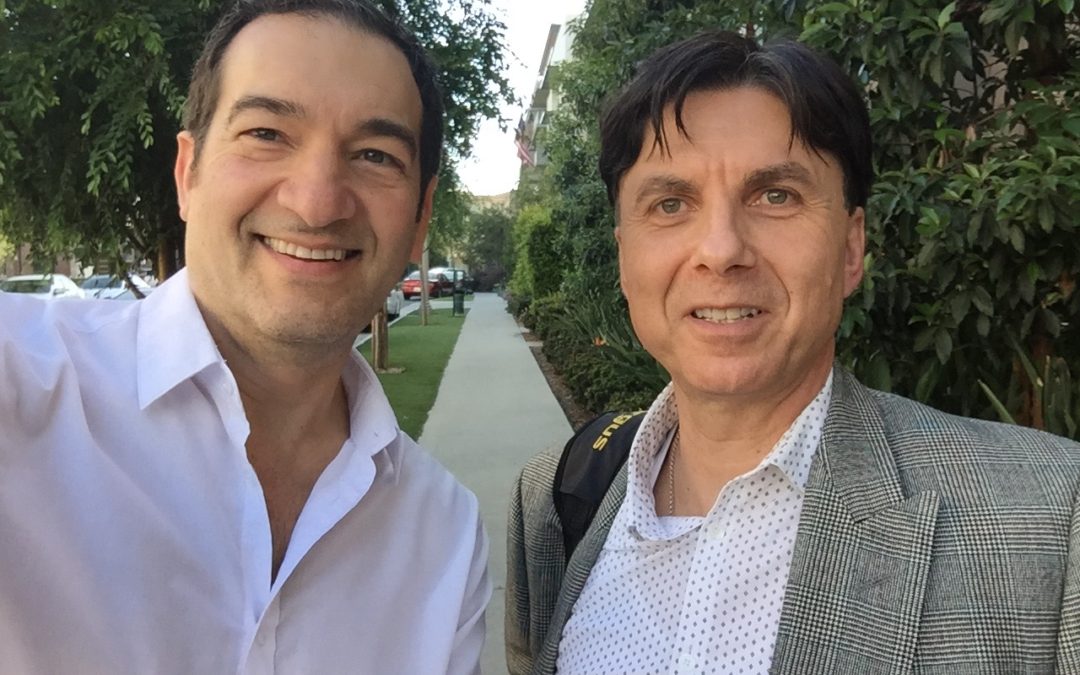
by WriteMovies | May 21, 2018 | Competition Offers, Highlights, Pitching, Updates, WriteMovies News
Want us to promote your script in our next our next Hollywood script pitching whirlwind tour, or other pitching? We are seriously looking for 2-3 scripts for 2x Academy Nominated and 2x BAFTA winning, Habib Zargarpour to direct. If you have what we need please participate in: https://writemovies.com/spring-2018-screenwriting-contest/
WriteMovies founder and producer Alex Ross and VFX expert turned movie director, Habib Zargarpour, just went on a tour of various Hollywood production companies talking to top executives about their new project. Here’s what happened! (more…)
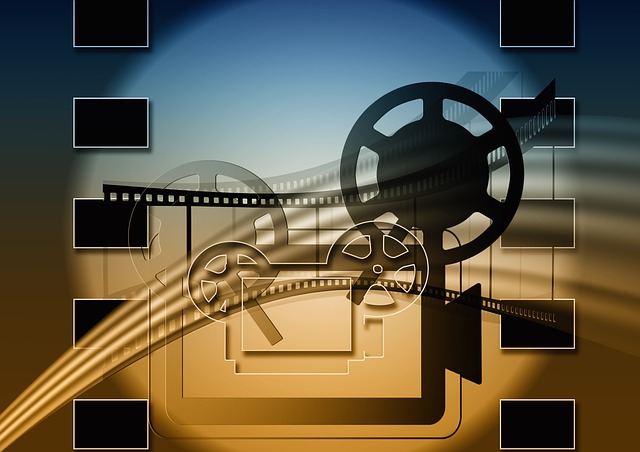
by John | May 11, 2018 | Competition Offers, Highlights, Updates, WMC, WriteMovies News
We’re looking for a script for a two-time Academy nominee and two-time BAFTA award-winning director – and submitting your VFX-driven script to our Spring contest can make it yours! Habib Zargarpour has worked with Spielberg, Lucas, Cameron and Villeneuve, on movies that countless millions of people have seen – and soon your script could join them. We’re looking for a great commercial script for him to work with, and if you submit to our Spring 2018 contest, you will be in the running for that opportunity.
As we’ll tell you very soon, Habib and our founder Alex have been getting a lot of success in recent meetings with senior Hollywood execs about their next crossover project, and yours could be next! We’ve introduced many new categories to the Spring 2018 – long and short form TV pilots, indie and studio scripts, and video game scripts. Inspired by this opportunity, we will be giving a special recognition to the Best VFX Driven Script that we receive. There’s no special prize – just kudos – but if Habib loves it then we CAN make this happen.
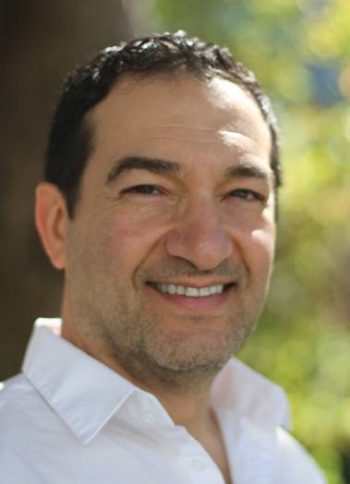
Award-winning VFX expert Habib Zargarpour
What we want is the script where VFX can help drive the plot, the characters, and the script as a whole. We don’t want style over substance, we want style to give substance! We’re looking for a VFX-driven script with crossover potential to make an awesome video game. The director of this project, Habib Zargarpour (find out more about him in THESE past interviews, and in more articles we’ll publish soon!) has been VFX consultant on lots of major movies and major video games including 007 and NEED FOR SPEED titles – so we have the potential to take this to both markets, which is exactly what Habib and Alex have been doing for another project in Hollywood in the last few days – as we’ll be telling you next week!
So polish up that movie script you thought would be too expensive for anyone to make, and get it to us NOW!
Enter HERE!
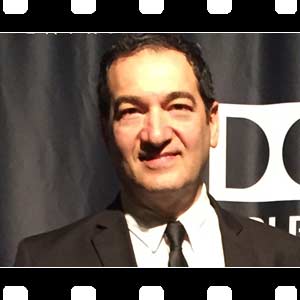
by John | Nov 19, 2017 | Highlights, Interviews, Updates, WriteMovies News
Taking Flight in THE SQUADRON: VFX expert Habib Zargarpour on becoming a writer-director and the getting the balance right with real VFX.

In the third of our series of interviews, our Ian Kennedy asks Habib about his transition to writing and directing, the unique eye his new film will give to WW2’s aerial warfare, and why VFX pros have to keep it real too.
 IAN: So next for you is THE SQUADRON which you’ve written and are directing!
IAN: So next for you is THE SQUADRON which you’ve written and are directing!
HABIB: Yes, we’re doing a lot of visual effects shots for this shoot, we’ve got a lot of actors in cockpits, we’ll have to replace the background with what’s going on in the skies. It’s very tricky to light and to put greenscreen around real authentic planes, because the light has to move to show that the plane is moving, but you don’t want something [a heavy light] that could fall and wreck the [actual] plane, so we have to be super-careful with that, there’s a lot of technical challenges to it.
IAN: I was lucky enough to be consulted by Alex Ross (THE SQUADRON producer and WriteMovies founder) about one of your very early drafts of this one, it was fascinating to see how visual your ideas were – too many writers come from the opposite direction, getting heavy with dialogue and exposition, and you’re coming from the other way round with that.
HABIB: This is interesting to hear, because I don’t know any different, from you guys’ point of view! I do know I’m getting better at it for sure, it really helps to see how things evolve once you start shooting, we also got great synergy between the actors when we shot in a warehouse in Vancouver, them playing off each other. When I wrote I had the cast in mind, and things have worked out even better than I thought – they enhance it, they also bring stuff to the table by saying things like “I think my character would be more “…” in this situation, he’d say this other thing…” – so that’s woven into it. This next shoot should come together really well because all of these elements will come together, and hopefully the continued dialogue will keep getting even better at the same time. I’m looking forward to sending you a rough cut of the trailer, see what you think!
IAN: That’ll be amazing yeah! The pictures I have in my mind from what I’ve seen in the script are a really distinctive use of that whole World War 2 setting. Sometimes we feel like we’ve seen all there is to see of that conflict, but there’s always more to explore and it felt like you’ve put a good new edge into that.
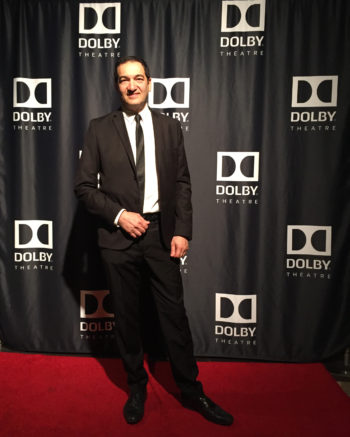 HABIB: I had a lot of fun preparing for it, even though the timeframe was very tight, I only had 4 weeks to get all that in mind, finishing the script, getting the props, getting wardrobe, all the logistics for the travel and permits and things like that. One of the more fun things was to design and 3D print and build the props that I couldn’t find, and others that I wanted to custom design, taking advantage of my ArtCenter experience, building models of products that look authentic. I was able to apply those and use the latest technology – I have a 3D printer that I use, that gets the models and then we do the finishing and polish on them. The other things are all authentic that I was able to gather over a long time, by going to air races and going online on eBay, there were these authentic goggles and flight caps. A lot of things needed adjusting for size because people were smaller then, which was interesting!
HABIB: I had a lot of fun preparing for it, even though the timeframe was very tight, I only had 4 weeks to get all that in mind, finishing the script, getting the props, getting wardrobe, all the logistics for the travel and permits and things like that. One of the more fun things was to design and 3D print and build the props that I couldn’t find, and others that I wanted to custom design, taking advantage of my ArtCenter experience, building models of products that look authentic. I was able to apply those and use the latest technology – I have a 3D printer that I use, that gets the models and then we do the finishing and polish on them. The other things are all authentic that I was able to gather over a long time, by going to air races and going online on eBay, there were these authentic goggles and flight caps. A lot of things needed adjusting for size because people were smaller then, which was interesting!
IAN: CGI has really taken over so much of VFX in recent decades. Have you missed working with physical materials and objects, like the models you’ve brought back into THE SQUADRON?
HABIB: [You should use] whatever can be done the most easily that makes the most sense and most helps the actors – you’d want to do something practical, if it’s something they’re wearing or touching. I myself had to do a lot of CGI for some of the very complex aerial combat scenes. That’s always a question of how much of the real you can bring in. Theoretically you could shoot someone against a greenscreen and put the whole airplane around them, as opposed to filming them in a real cockpit around them, each of those brings different challenges and pros and cons to it. Usually, the more you can get the real stuff in it, the easier it’s gonna be to get the right look.
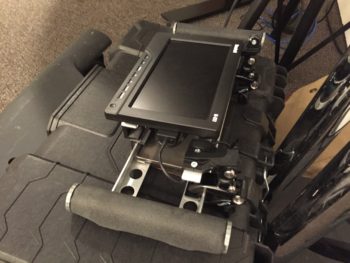 IAN: And there’s been an audience backlash against overdone excessive CGI and unreal characters, so it’s important to keep that balance.
IAN: And there’s been an audience backlash against overdone excessive CGI and unreal characters, so it’s important to keep that balance.
HABIB: Yes, and I recently saw Dunkirk, and I know Christopher Nolan’s a massive fan of ‘as much practical as possible’. I’ll send you my trailer rough cut soon too…
IAN: Definitely. And we’d love to talk about your work as a lead designer in famous computer games too!
© WriteMovies 2017. Exclusive to WriteMovies – To syndicate this content for your own publication, contact ian (at) writemovies dot-com.

by John | Nov 12, 2017 | Interviews, Updates, WriteMovies News
The eye of the storm: in the second of our series of VFX interviews, VFX expert Habib Zargarpour reveals how his teams achieved such awesome effects in A PERFECT STORM, TWISTER, STAR TREK: GENERATIONS, STAR WARS EPISODE I (THE PHANTOM MENACE) and many other films.

In the second of our series of VFX interviews, Habib tells our Ian Kennedy how to achieve natural disasters and why yogurt holds the key to VFX. His credits include two STAR TREK movies, STAR WARS EPISODE 1 (THE PHANTOM MENACE), THE BOURNE IDENTITY, JUMANJI, THE MASK, SPAWN and lots more so he must be onto something!
 HABIB: I’ve had the chance to work on a lot of disaster films, especially natural disasters. For those we would work with storyboards but also with tons of real-world reference, which was difficult. People have seen on TV what tornados look like, stormy seas look like, how water looks, what fire looks like, things that we had very difficult but precise things to match to. There were other projects where we had much more creative freedom in the effect, for example on Star Trek, there would be maybe one concept art of the energy ribbon nexus effect in STAR TREK: GENERATIONS, then we would come up with what that would look like in 3 dimensions, how that would move, and what the colours would be, so that there’s a nice range there. Other times we would take, let’s say the tornado effect in Twister, turn it upside down, turn it around and that would be the rocket flow, you know? I equate it to making yogurt – you always need a little bit of [older] yogurt that helps to get the new one going, it saves you a bit of time, you know? And so for example, for A PERFECT STORM we had to do sprays and splashes of water, but we already had a particle system from TWISTER and we were able to do different things with it. How to we take things that are meant to simulate a dust storm and something that looks dusty and thick, and make it look like water vapor, make it look like a splash. There’s the physics of how all that moves, but when it comes to the look of it, there’s actually a lot of similarities between dust in the air and spray and water mist in the air, you study the difference. We added in light penetrating deeper which was able to scatter more, and that gives you the water splash. We had real water splashes to match to on set, and references of stormy seas – that kind of stuff’s really tough.
HABIB: I’ve had the chance to work on a lot of disaster films, especially natural disasters. For those we would work with storyboards but also with tons of real-world reference, which was difficult. People have seen on TV what tornados look like, stormy seas look like, how water looks, what fire looks like, things that we had very difficult but precise things to match to. There were other projects where we had much more creative freedom in the effect, for example on Star Trek, there would be maybe one concept art of the energy ribbon nexus effect in STAR TREK: GENERATIONS, then we would come up with what that would look like in 3 dimensions, how that would move, and what the colours would be, so that there’s a nice range there. Other times we would take, let’s say the tornado effect in Twister, turn it upside down, turn it around and that would be the rocket flow, you know? I equate it to making yogurt – you always need a little bit of [older] yogurt that helps to get the new one going, it saves you a bit of time, you know? And so for example, for A PERFECT STORM we had to do sprays and splashes of water, but we already had a particle system from TWISTER and we were able to do different things with it. How to we take things that are meant to simulate a dust storm and something that looks dusty and thick, and make it look like water vapor, make it look like a splash. There’s the physics of how all that moves, but when it comes to the look of it, there’s actually a lot of similarities between dust in the air and spray and water mist in the air, you study the difference. We added in light penetrating deeper which was able to scatter more, and that gives you the water splash. We had real water splashes to match to on set, and references of stormy seas – that kind of stuff’s really tough.

A still from one of Habib’s films, A PERFECT STORM.
Things have come a long way in 17 years since A PERFECT STORM. Software is able to simulate all the different components of water, it still takes a huge amount of time to run those things, but at least some of it’s more achievable all in one place, whereas back then we had to divide things up into elements separately so the machines could deal with it, and the artists, actually. We learned a lot from meteorologists and people who study oceans and storms, I don’t know whether they gained anything from us other than enjoying it visually. It’s amazing watching on TV these days, it’s a strange combination of things going on at the same time, like earthquakes and watching these hurricanes going on through all the time. At the time I was working on TWISTER I had trouble driving, because I would get distracted by cloud formations in the skies, sometimes I’d have to pull over and take pictures of it. That could be dangerous!
IAN: I bet! So – if all the directors and DPs and VFX people you’d worked with all separately asked you to work on their different projects at exactly the same time, who would you choose?
HABIB: Oh God! (laughs) That’s a really tough question. I think it’d be a tie between Denis [Villeneuve] and John Nelson. Denis is a really great visionary director, and I know whatever John Nelson does next is gonna be maybe perfect!
© WriteMovies 2017. Exclusive to WriteMovies – To syndicate this content for your own publication, contact ian (at) writemovies dot-com.

by John | Nov 5, 2017 | Updates
The bleeding edge of BLADE RUNNER 2049: VFX expert Habib Zargarpour talks about his work on a sequel that’s been 35 years in the making!

In the first part of our interview series in the run-up to the release of BLADE RUNNER 2049, Ian Kennedy asked Habib about the most long-awaited sequel we could think of, building on the most influential visual effects of the 1980s, and why he thinks 3D Laser IMAX is the best way to watch it…

Habib at the Visual Effects Society (VES) Summit.
IAN: The original BLADE RUNNER had maybe the most influential visual effects of the 1980s – making the new one must be a dream VFX job, but a lot to live up to!
HABIB: The original BLADE RUNNER is the reason I got into the industry, it made me want to do what I’m doing, it was the inspiration – similar to a lot of other people, I’m sure. It’s been also my favorite film of all time, I caught on to it late after it had already released, I saw it on video and on a director’s cut at an ArtCenter screening in Pasadena. I found out about Ridley Scott but also discovered Syd Meade, the designer originally hired to do the vehicle designs but who ended up filling his paintings with these amazing backgrounds of futuristic art-deco dark-future LA. A lot of his designs are infused in the movie, and I heard that he’d attended ArtCenter College of Design, so I made it my mission to go there. I was really happy to be accepted there, and I was able to attend this pretty rigorous program of training. I joined the Industrial Design curriculum, which includes transportation and product design. After graduating I kind of tripped into film by accident by just taking a summer job designing for a film, and the rest is history. I ended up going to Industrial Light and Magic [Lucasfilm’s awesome VFX and animation studio]. After a few years, there was an ArtCenter alumni dinner, and I got to meet Syd Meade, and Michael Bay who is another alumnus. We met when Michael Bay was doing Armageddon, I also got to meet him on set through Alex McDowell, the production designer.
John Nelson and I first met when I was nominated for A PERFECT STORM and he was nominated for GLADIATOR, we were competing against each other, I was able to win the BAFTA for A PERFECT STORM but he won the Oscar for GLADIATOR so it was an interesting year! We’ve been great friends ever since, sharing stories – we’ve always wanted to work together and this was a great opportunity. Being able to work on the new BLADE RUNNER was coming full circle for me, because it ties me straight back to what got me into the field in the first place. I was extremely happy when John gave me a call about it – we’d actually been talking before last summer [2016], and I was going to be joining him on the project earlier but for various reasons that didn’t work out. But then I got to join them in postproduction [as VFX Consultant] to help them out because they had tons of work to do and the schedule had been pulled in.
I think the greatest thing about working on the project with John Nelson is to work directly with Denis Villeneuve, the director [also of ARRIVAL, SICARIO and others], and collaborating with him. He’s a great visionary, one of the best directors that I know in terms of knowing exactly what he’s looking for and having a vision and sticking to that. Between him and the DP [Director of Photography] Roger Deakins, both of them were very steadfast in sticking to the plan and making sure everything aligns to that. The film had 7 visual effects houses working on it from around the globe, which is a lot! And so John Nelson and I were splitting the work of overseeing all of that. I was brought in as a consultant, we split the reviewing of individual shots, we would also do a ‘shot triage’, looking at various shots that we thought could have been better and analyzing them together, pulling up Photoshop and trying painting over certain things and adjusting certain things, just seeing what our intuition said would work. It was a great collaborative thing to do, we did something like 500 shots of paintovers for alterations to send to the vendors. The schedule was really compressed. We would get feedback from the director and DP, it takes time for a complicated shot to be turned around with the notes, in terms of the things that have to happen to it, because it’s so complex. So we would use the paintovers as a way to get input from the direction [team], so when they had a comment on a certain element, let’s say the sky, we would iterate with them until they were happy, and then send it to the vendor for them to change it. This technique proved to be really efficient, it also helped John and I see what would help and what wouldn’t help on a certain situation, it became a useful technique for adjusting things. There was a very particular direction and style for how the sky should look and how the world would look, and all of those things needed adjusting over time – how the atmosphere feels, how the lighting in general would feel. All these things we would adjust, the DP and director would have comments or revisions on them. Sometimes if something wasn’t looking quite realistic, this would go through the paintover triage too. John had some great tricks up his sleeve that he would try, and I would chip in with some other ideas, so the collaborative side of it was what worked well…

Habib and John Nelson during their time working on BLADERUNNER 2049.
The VFX crew we were working with, all the various vendors we were collaborating with, were all really top-notch, they were doing really bleeding-edge work, and so that was another great aspect of it for me, was to be able to collaborate directly with those supervisors and crew, every facility was bringing their top people to the crew, everyone was really passionate about this project. There are also miniatures mixed in with CG on some situations, that was a bit of a homage to the original, to keep a foot in that world, a tangible item, things that could have a certain look to it, and then also many digital shots as well.
I think it takes the feeling of the original and takes it even further, especially in terms of how it impacts the audience emotionally, with how the city felt, how the world felt, and what it would feel like 30 years later. I think it not only picks up from there [the original BLADE RUNNER] but I think takes it to a great place that’s very plausible. And that’s a lot to do with how Denis and Roger really stuck to their vision, and getting that oppressive feeling into all the shots and sticking to it.
IAN: So I’ve gotta ask. Is Deckard a replicant? Are we finally gonna get the answer to questions like that?
I definitely can’t say! The trailers are interesting, I was initially afraid they’d be giving too much away, but I think the film has enough intrigue, and I’m hoping audiences will go see it regardless and enjoy it. It’s truly a great story and I think that having screened it a few times in 3D screenings, Denis has done an amazing job to pull all these elements together to really create something that takes the original above and beyond, and pulls you back into that world, and gives you a lot to chew on. It’s definitely the sort of film you’re gonna want to watch more than once – figure it out and figure out amazing things. The visual and audio treats are gonna make you want to do that anyway because of seeing all that come together in the film, with an unbelievable soundtrack and music. I hope the film brings new fans to see the original if they haven’t already, once they’ve seen this. Also I think fans are gonna love how that original vibe and sense of being in that world is not only kept and continued but also accentuated, it really does a great job of that and that’s thanks to the discipline from Denis and Roger to stick to the plan and vision.
IAN: Were there any differences between Ridley Scott [now a producer not director on this one] and Denis about what direction to take it in?
I was brought in in postproduction, from what I’ve seen I think Ridley Scott and Denis were very aligned, I think everyone’s very happy with how it’s turned out.
IAN: The great thing of the original is how it divides opinions between people who love it. I’m guessing there’s things here that’ll keep the flames burning another 35 years!
HABIB: Hopefully if they’re gonna make another one it’ll be sooner, it’s a long time to wait!
IAN: I can’t think of a longer-awaited sequel, can you?
HABIB: No, no. And for me it was just such an amazing experience on many levels, including finally getting to work with John Nelson who’s just an amazing visual effects producer who’s worked on GLADIATOR and IRON MAN, massive projects. He’s got an amazing eye for detail and really understands how to take what we’re making and do what’s necessary to make it work. That was really rewarding for me to learn from him, how his approach would solve things. I hope me working with him was helpful and ended up making things better. My official title on this film is VFX Consultant (Post-Production).
Well I can’t wait for you to see BLADE RUNNER 2049, it’s a huge treat, I’ve seen both [the] 2D and 3D [versions]. I’ve always been a proponent of 3D, but for many movies I’d always prefer the 2D. For this one, I was surprised, I thought I’d like the 2D better, but the 3D team’s done a great job with how they’ve done this, there’s nothing in your face, it just draws you into that world. The best version I’ve seen is the 3D Laser IMAX, it’s unbelievable clarity and brightness, it really pulled me in. There’s something about being drawn into film. When you put on the 3D glasses they have the effect of isolating the room away in an interesting way, so you forget where you’re sitting, and that for me enhanced the film even more. You’re dealing with the imagery – the way the world’s moving – to have the next  step there and get pulled into it. The regular IMAX 3D was good too! Let’s touch base when you’ve seen the film, I want to know what you think!
step there and get pulled into it. The regular IMAX 3D was good too! Let’s touch base when you’ve seen the film, I want to know what you think!
IAN: That’d be great, thanks!
In the next part… Habib reveals how his teams achieved such awesome effects in A PERFECT STORM, TWISTER, STAR TREK: GENERATIONS and many other films!
Find out what Ian thought about the movie in our First Look here…
© WriteMovies 2017. Exclusive to WriteMovies – To syndicate this content for your own publication, contact ian (at) writemovies dot-com.

by WriteMovies | Oct 7, 2017 | Highlights, Ian Kennedy, Movie Reviews and TV Reviews, Writing Insights
Our Ian Kennedy on why it’s a fitting follow-up, why you should watch it in IMAX 3D, why it’s like the original in some unintended ways too, and why some audience reaction will suffer as a result…

I’ve got a long history with BLADE RUNNER. I saw it as a teenager in the 90s, again at University where I also attended lectures about it and wrote an essay about it, and I was also tasked with writing Example Development Notes for it during my time training up to join WriteMovies (which I’ll publish for you to read here – a good example of how our Development Notes look to take even the best scripts to the next level! Here’s another example about BLADE RUNNER from a more recent trainee). So you can imagine how excited I was to interview BLADE RUNNER 2049’s VFX Consultant Post Production, Habib Zargarpour, in the run-up to the sequel’s release. While we wait on official approval to publish that, I’ve now had the chance to catch the movie itself, and I wasn’t disappointed – though I think some people will be.
Habib recommended I catch the film in IMAX 3D, for reasons he explains in the interview. And boy was he right. That technology has been truly nailed now, and paired to a uniquely visualized movie like this, it really looked and felt like all the actors and scenes were happening right before my eyes. The 3D is subtle and natural, not artificial and showy, and became an important part of the experience. It’s hard to exaggerate what a naturally immersive experience the IMAX 3D made it. The visuals were stunning throughout – a great job from everyone involved, of which there were hundreds across the globe!
The original explores what it is to be human, and raises the unnerving prospect that replicants may actually be more human than us in some ways. BLADE RUNNER 2049 takes that further – almost the whole story is told from replicants’ points of view, and it takes their world to important new places and times, showing us why perhaps it’s their side we should have been on all along – something the original only hints at. The most interesting character in the new film, though, is actually Joi, the AI who acts as wife to Ryan Gosling’s low-key ‘Blade Runner’ cop – bewitchingly fascinating and uncanny throughout, and easy to fall in love with.
I noticed an interesting parallel to the original – just like for BLADE RUNNER, the trailers sold it as more of an action movie, where the movie actually gave us much more of a slow-burn mood movie (more subtle thoughtful than action-packed, like director Denis Villeneuve also gave us in ARRIVAL – read my Insights into that film here) – and that gap in expectations may result in exactly the kind of mixed audience reactions the original got at first! So far the critics’ reactions I’ve seen are good, and I think it’ll definitely find its place, but in the main, this is definitely NOT an action movie, and long passages focus much more on the vacant emotional life of Ryan Gosling’s inexpressive cop than on plot development – in fact the eerie sound design is often used to make up for the lack of plot development. Some audiences – probably ones who hadn’t seen the original – may even find the storytelling slow and unengaging, especially in the first half. In other hands this story would have made a much sharper two-hour movie, not the 2hrs43mins we’ve been given here, but for me it’s great to see genuinely thought-provoking and subtle films getting their chance at last – I wrote a series of Insights articles about that earlier this year comparing ARRIVAL, MOONLIGHT and MANCHESTER BY THE SEA.
So, this is a great movie, but maybe not in all the ways you’d expect. But with its haunting themes and stunning visuals, you might enjoy it even more second time around. Can’t wait to tell you the inside story from Habib!
© WriteMovies 2017. Exclusive to WriteMovies – To syndicate this content for your own publication, contact ian (at) writemovies dot-com.

by John | Sep 21, 2017 | Industry News, WriteMovies News
We have an exclusive Habib Zargarpour interview coming soon all about his work on BLADE RUNNER 2049. Habib also reveals how his teams achieved such awesome effects in A PERFECT STORM, TWISTER, STAR TREK: GENERATIONS and many other films!

Our Director of World Wide Development, Ian Kennedy, has been speaking with the VFX expert, Habib Zargarpour. Keep reading to learn about his experience on the BLADE RUNNER sequel, working on the same project as Ridley Scott, his previous work and becoming a writer-director on his next film THE SQUADRON.
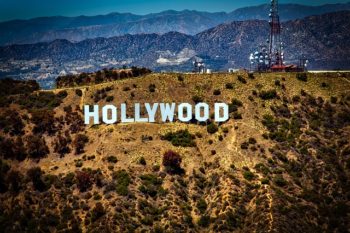 Ian and Habib talk about everything BLADE RUNNER – the sequel, Ridley Scott vs Denis Villeneuve, whether this is the most anticipated sequel ever, if Deckard is a replicant, and the art of VFX… and how yogurt holds the key. Habib has also worked on movies for STAR TREK, STAR WARS, BOURNE, A PERFECT STORM, JUMANJI, THE MASK and so many more – you don’t wanna miss this!
Ian and Habib talk about everything BLADE RUNNER – the sequel, Ridley Scott vs Denis Villeneuve, whether this is the most anticipated sequel ever, if Deckard is a replicant, and the art of VFX… and how yogurt holds the key. Habib has also worked on movies for STAR TREK, STAR WARS, BOURNE, A PERFECT STORM, JUMANJI, THE MASK and so many more – you don’t wanna miss this!
We’ll be publishing the interview in stages over the coming days… watch our Twitter and Facebook feeds for the latest releases!
Check out Habib’s IMDb page and learn more about him HERE.
Exclusive to WriteMovies – To syndicate this content for your own publication, contact ian (at) writemovies dot-com.
© WriteMovies 2017











